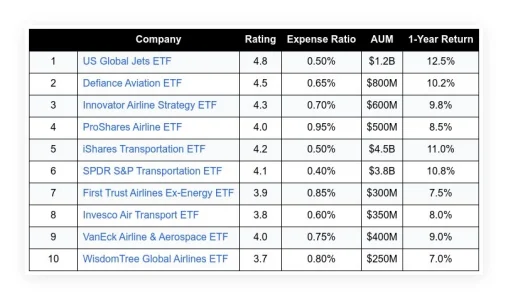Imagine you’re at a pizza place with two options: you can order individual slices of whatever looks good, or you can get the “chef’s special” that includes a variety of slices all on one plate. Both approaches can satisfy your hunger, but they offer entirely different experiences.
That’s essentially the choice between buying individual stocks and buying mutual funds. Individual stocks are like choosing specific slices – you get precisely what you pick, for better or worse. Mutual funds are like the chef’s special – you get a pre-selected variety that’s designed to give you a well-rounded meal.
Let’s dig into which approach might work better for your investment appetite.
Table of Contents
ToggleWhat You’re Actually Buying
Individual Stocks: When you buy stock in Apple, you own a tiny piece of Apple Inc. – their iPhones, their cash, their stores, their future profits, everything. If Apple does well, you do well. If Apple struggles, you struggle right along with them.
You get to make all the decisions: which companies to buy, when to buy them, when to sell, and how much to invest in each one. It’s complete control, which can be either empowering or overwhelming.
Mutual Funds: A mutual fund pools money from thousands of investors to buy a collection of stocks (and sometimes bonds). When you buy shares of a mutual fund, you’re buying a slice of that entire collection.
For example, a large-cap growth mutual fund might own stocks in 100 different companies. Your $1,000 investment gets you a proportional share of all 100 companies. A professional fund manager decides which companies to include and when to buy or sell them.
The Case for Individual Stocks
Higher: Return Potential. This is the big draw. If you pick the right stocks, you could see returns that make mutual fund gains look tiny. Amazon stock has returned over 15,000% since 2000. Netflix gained over 4,000% from 2013 to 2021. No mutual fund comes close to those numbers because their weaker holdings hold them back.
You Know What You Own: When you own Disney stock, you understand precisely what you’re invested in – theme parks, movies, streaming services. With a mutual fund, you might own pieces of 200 companies without even knowing their names.
No Management Fees: Individual stocks don’t charge ongoing fees (beyond small brokerage commissions). Many mutual funds charge 0.5% to 2% annually, which can add up to tens of thousands of dollars over a lifetime.
More Engaging and Educational: Following individual companies teaches you about different industries, business models, and economic trends. This education can make you a better investor over time, and frankly, it’s more interesting than watching a mutual fund’s slow and steady progress.
Tax Efficiency: You control when you sell and realize capital gains. With mutual funds, you might get hit with taxable distributions even when you didn’t sell anything.
The Case for Mutual Funds
Instant Diversification: This is huge. Instead of needing thousands of dollars to buy meaningful positions in 20-30 different companies, you can get broad diversification with a single $100 mutual fund purchase. If one company in the fund fails completely, it barely affects your overall return.
Professional Management: Fund managers spend their entire careers studying companies, analyzing markets, and making investment decisions. They have access to research, company meetings, and analytical tools that individual investors don’t.
Less Time and Stress: You don’t need to research individual companies, read earnings reports, or stay up-to-date on industry trends. The fund manager handles all of that. You can set up automatic investments and ignore your account for years.
Automatic Rebalancing: As companies grow and shrink, the fund automatically adjusts. If a company gets too big compared to its peers, the manager might sell some shares. If a company falls out of favor, it gets replaced with something better.
Smaller Minimum Investments: Many mutual funds let you start with $100 or less, while building a diversified portfolio of individual stocks might require $10,000 or more to do properly.
The Numbers Game: Costs and Returns
Individual Stock Costs:
- Trading commissions: $0-$10 per trade (many brokers now offer free stock trades)
- Ongoing fees: None
- Time investment: High (research, monitoring, rebalancing)
Mutual Fund Costs:
- Trading commissions: Usually none
- Expense ratios: 0.05% to 2.50% annually
- Time investment: Low (mostly set-and-forget)
Historical Performance Reality Check: Here’s something that might surprise you: most professional fund managers don’t beat the overall stock market over long periods. About 80-90% of actively managed mutual funds underperform simple index funds over 10+ year periods.
This doesn’t mean mutual funds are bad – it means that broad market exposure through low-cost index funds often delivers better returns than trying to pick winners, whether you’re doing it yourself or paying a professional to do it.
Different Types of Mutual Funds
Index Funds: These don’t try to beat the market – they try to match it by owning the same stocks as a market index like the S&P 500. They typically have very low fees (0.03%-0.20%) and consistently good performance.
Actively Managed Funds: Professional managers try to beat the market by picking stocks they think will outperform. Higher fees (0.5%-2.0%) and mixed results, but some managers do consistently outperform.
Target-Date Funds: These automatically adjust from aggressive (mostly stocks) when you’re young to conservative (more bonds) as you approach retirement. Perfect for hands-off investors.
Sector or Specialty Funds Focus on specific industries (technology, healthcare) or investment styles (growth, value). More specialized and usually higher risk.
Risk Considerations
Individual Stock Risks:
- Company risk: One bad earnings report can tank your investment
- Concentration risk: Having too much money in one or a few companies
- Emotional risk: Harder to stay disciplined when watching individual stocks fluctuate
Mutual Fund Risks:
- Market risk: Still goes down when the overall market declines
- Manager risk: What if the fund manager leaves or makes poor decisions?
- Style drift: The fund might change its strategy over time
Who Should Choose What?
Individual Stocks Make Sense If You:
- Enjoy researching companies and following business news
- Have strong convictions about specific companies or industries
- Have enough money to properly diversify (15+ different stocks)
- Don’t mind the extra time commitment
- Can handle the emotional ups and downs of individual stock ownership
- Want to potentially outperform the market (while accepting the risk of underperforming)
Mutual Funds Make Sense If You:
- Want broad diversification with minimal effort
- Prefer a “set it and forget it” approach
- Have limited time to research investments
- Want professional management
- Are investing smaller amounts
- Prefer steadier, more predictable returns
- Want to match market performance rather than trying to beat it
The Hybrid Approach (What Many Smart Investors Actually Do)
You don’t have to choose just one approach. Many successful investors use both:
- Core holdings in index funds: (70-80% of portfolio) for broad market exposure and stability
- Satellite holdings in individual stocks: (20-30% of portfolio) for companies they’re excited about or industries they want to overweight
This gives you the best of both worlds: diversified, steady returns from funds plus the potential upside and engagement of individual stocks.
Getting Started: Practical Steps
If You Choose Individual Stocks:
- Start with large, well-established companies you understand
- Plan to own at least 15-20 different stocks across various industries
- Set rules for when you’ll sell (both for gains and losses)
- Don’t put more than 5-10% of your portfolio in any single stock
- Keep learning about financial analysis and business evaluation
If You Choose Mutual Funds:
- Start with broad market index funds (low fees, good diversification)
- Add international funds for global exposure
- Consider target-date funds if you want completely hands-off investing
- Set up automatic monthly investments
- Rebalance annually or when allocations drift significantly
For the Hybrid Approach:
- Build your foundation with index funds first
- Once you have $10,000+ invested, consider adding individual stocks
- Limit individual stocks to 20-30% of your total portfolio
- Choose stocks in different industries from your fund holdings
- Review and rebalance your overall allocation annually
Common Mistakes to Avoid
With Individual Stocks:
- Don’t put all your money in one or two companies, no matter how much you love them
- Don’t buy stocks just because they’re cheap or have fallen a lot
- Don’t try to time perfect entry and exit points
With Mutual Funds:
- Don’t assume higher fees mean better performance
- Don’t chase last year’s best-performing fund
- Don’t own too many similar funds (you’ll just duplicate holdings and increase fees)
The Bottom Line
There’s no universally “right” choice between stocks and mutual funds. The best approach depends on your personality, available time, investment knowledge, and financial goals.
If you’re just starting out, mutual funds (especially low-cost index funds) often make the most sense. You can put in less money and still be investing. Mutual funds provide instant diversification, require minimal time and knowledge, and have historically delivered solid returns.
As you gain experience and confidence, you might add some individual stocks to the mix. But remember: even professional investors struggle to beat broad market index funds over long periods consistently.
The most important thing isn’t whether you choose stocks or mutual funds – it’s that you start investing consistently and stick with your approach through market ups and downs. Both can build wealth over time when used wisely.
Your investment strategy doesn’t have to be perfect; it just has to be something you’ll stick with for decades. Whether that’s individual stocks, mutual funds, or a combination of both, the key is getting started and staying consistent.
















